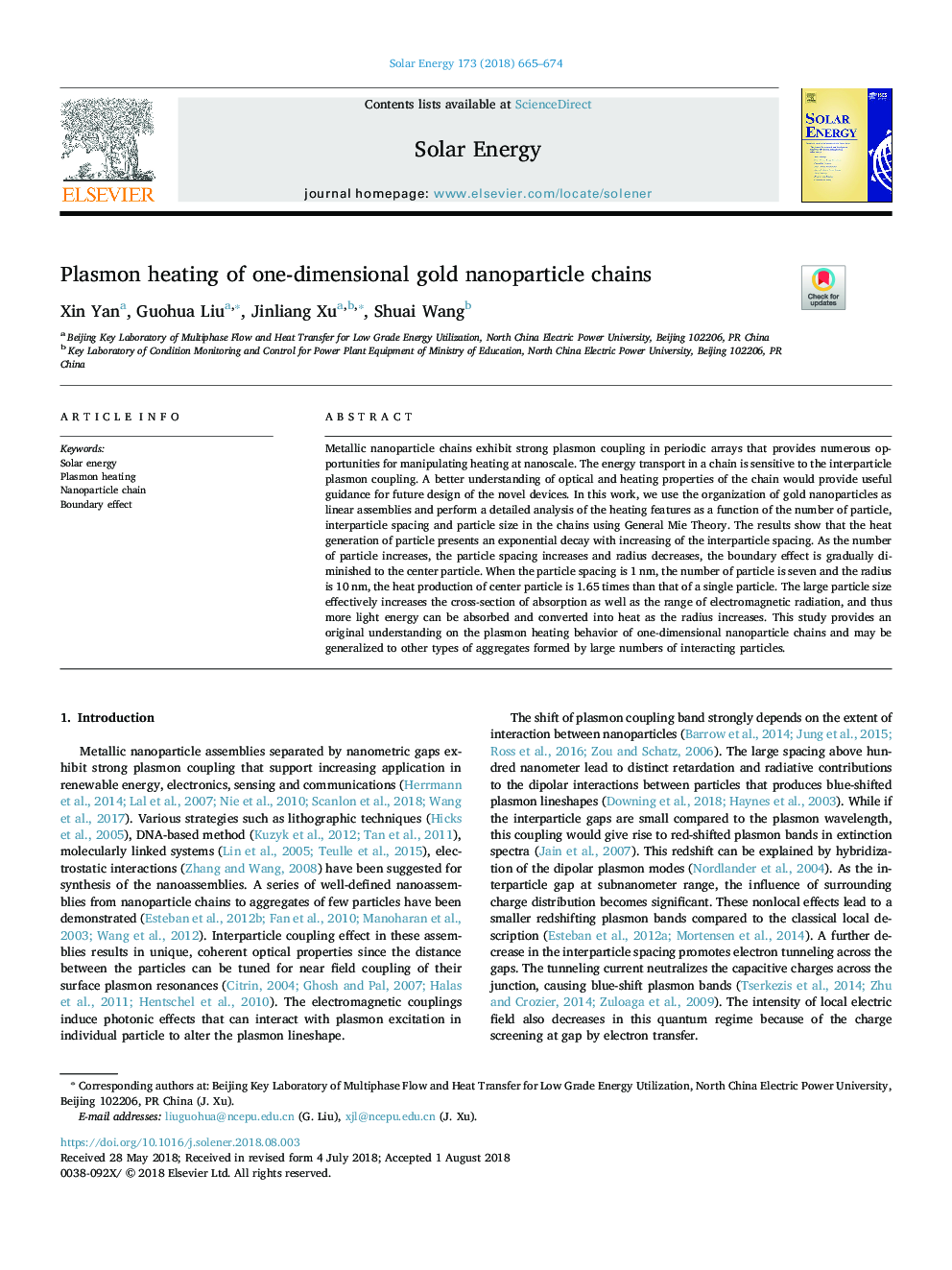| Article ID | Journal | Published Year | Pages | File Type |
|---|---|---|---|---|
| 7934966 | Solar Energy | 2018 | 10 Pages |
Abstract
Metallic nanoparticle chains exhibit strong plasmon coupling in periodic arrays that provides numerous opportunities for manipulating heating at nanoscale. The energy transport in a chain is sensitive to the interparticle plasmon coupling. A better understanding of optical and heating properties of the chain would provide useful guidance for future design of the novel devices. In this work, we use the organization of gold nanoparticles as linear assemblies and perform a detailed analysis of the heating features as a function of the number of particle, interparticle spacing and particle size in the chains using General Mie Theory. The results show that the heat generation of particle presents an exponential decay with increasing of the interparticle spacing. As the number of particle increases, the particle spacing increases and radius decreases, the boundary effect is gradually diminished to the center particle. When the particle spacing is 1â¯nm, the number of particle is seven and the radius is 10â¯nm, the heat production of center particle is 1.65 times than that of a single particle. The large particle size effectively increases the cross-section of absorption as well as the range of electromagnetic radiation, and thus more light energy can be absorbed and converted into heat as the radius increases. This study provides an original understanding on the plasmon heating behavior of one-dimensional nanoparticle chains and may be generalized to other types of aggregates formed by large numbers of interacting particles.
Keywords
Related Topics
Physical Sciences and Engineering
Energy
Renewable Energy, Sustainability and the Environment
Authors
Xin Yan, Guohua Liu, Jinliang Xu, Shuai Wang,
